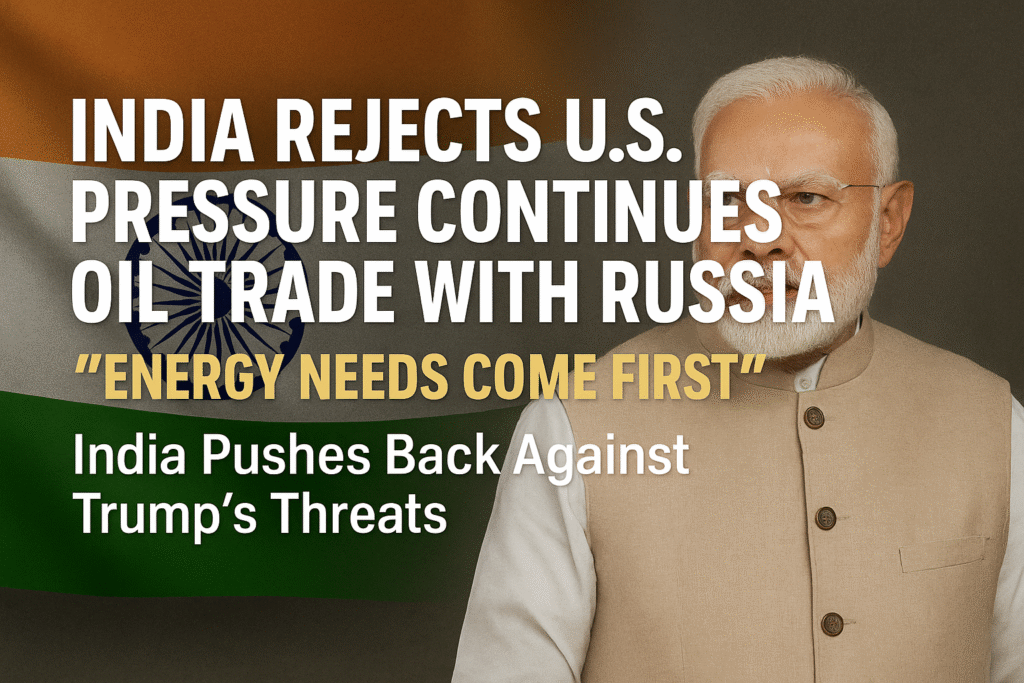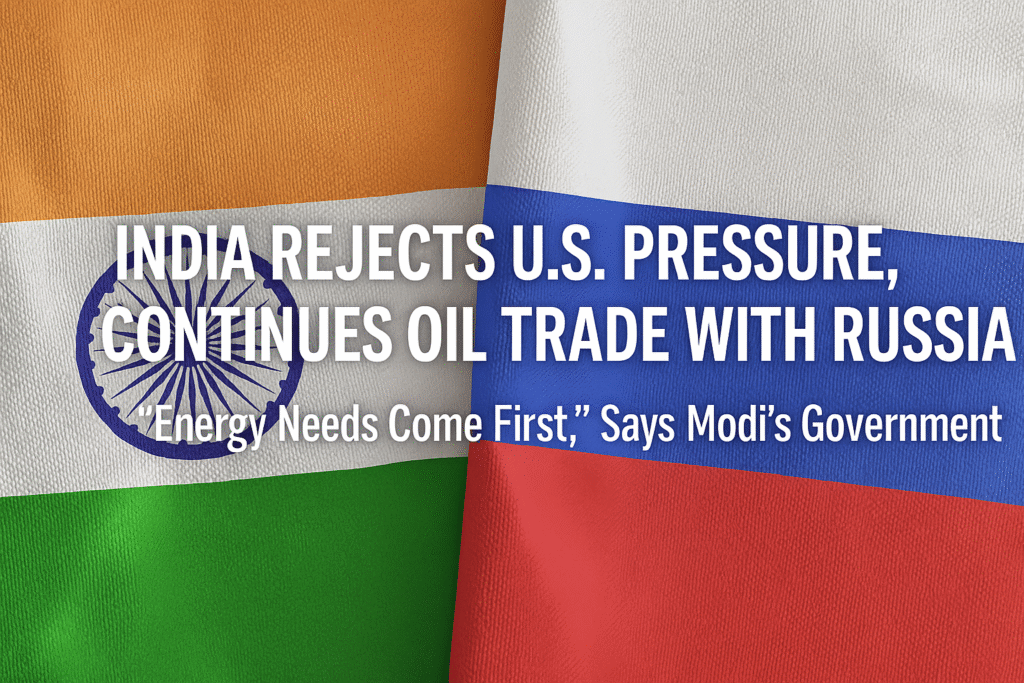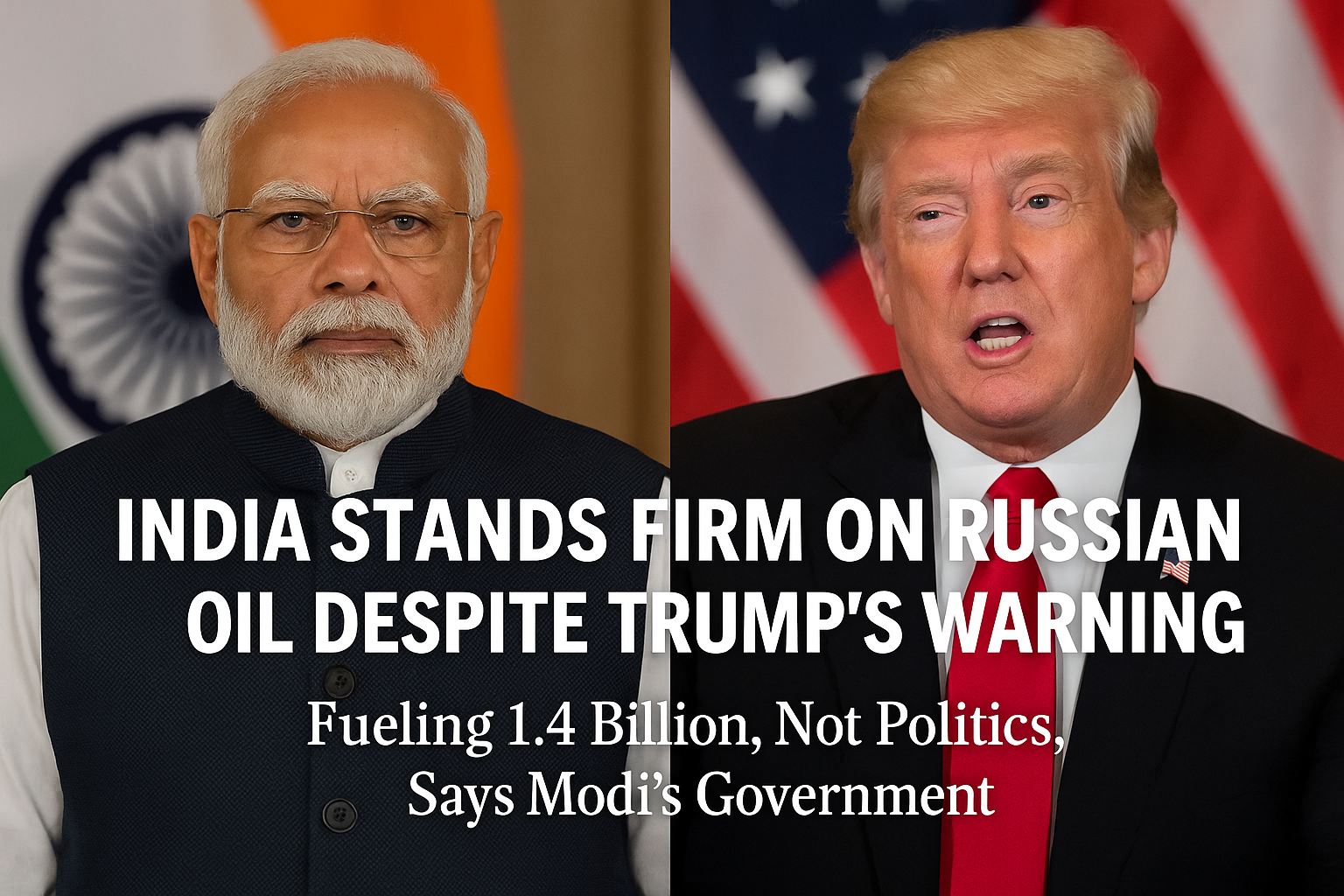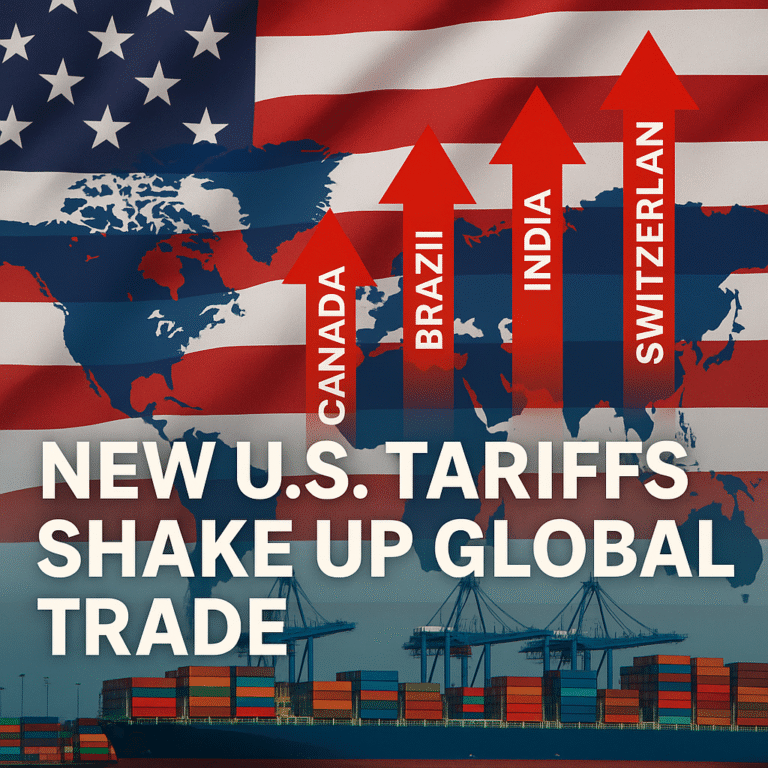Trump Imposes 50% Extra Tariff on Indian Imports Over Russian Oil TradeIndia Slams Move as Unfair and Unjustified

India has firmly stood its ground against external pressure, reaffirming its decision to continue purchasing Washington, D.C. —
U.S. President Donald Trump has signed a new executive order imposing a 25% additional tariff on Indian imports, citing India’s ongoing purchases of oil from Russia. This move pushes the total tariff on Indian goods entering the U.S. to 50%—one of the highest imposed by Washington.
The new tariffs will take effect on 27 August, giving a 21-day window from the order’s announcement.
In response, India’s Ministry of External Affairs said the decision is “unjustified, unreasonable, and discriminatory,” reiterating that India’s energy choices are driven by national interest. “It’s unfortunate that the U.S. is targeting India when other countries are making similar purchases,” the ministry stated.
Why Did Trump Impose New Tariffs on India?
President Trump defended the move, saying “India doesn’t care how many Ukrainians are dying due to Russia’s war machine.” He indicated more penalties could follow, including broader secondary sanctions.
In a separate press briefing, the White House emphasized that India’s increasing Russian oil imports threaten U.S. national security and efforts to pressure Moscow over its Ukraine aggression. Trump’s administration is also expected to monitor other nations buying Russian oil and may propose additional actions.
Russia remains India’s top oil supplier, making up over 35% of India’s crude imports, as per global energy data firm Kpler. In the first half of 2025, India imported nearly 1.75 million barrels daily from Russia.
India’s Response to the Tariff
Back in Delhi, officials worry the tariffs could devastate major export sectors like textiles, auto parts, gems & jewelry, and seafood—all key job creators. High-value electronics and pharmaceuticals remain unaffected for now.
Indian officials argue that the U.S. had earlier encouraged India to buy Russian gas to help stabilize energy markets after the Ukraine war began.
Trump’s decision could be the start of broader sanctions. Analysts warn that the U.S. may impose 100% tariffs on other countries dealing with Russian oil if they don’t comply with U.S. demands.
Despite strong trade ties and public friendship between Trump and Indian Prime Minister Narendra Modi, this move marks a sharp downturn in bilateral relations.
Export bodies in India, including the Federation of Indian Export Organisations (FIEO), have called the move “shocking”, warning it could impact up to 55% of India’s U.S.-bound exports.
The Global Trade Research Initiative (GTRI) estimates that the new duties could slash Indian exports to the U.S. by 40–50%, making Indian products far more expensive and less competitive.
Experts advise India to avoid immediate retaliation and focus on long-term negotiations to rebuild trust and prevent escalation.

A Long-Term Energy Vision
India has diversified its oil imports across 40+ countries. However, many alternatives come at higher prices. Gulf suppliers, including Saudi Arabia, often apply the “Asian premium,” which adds to the burden on buyers like India.
Officials also remain wary of past decisions. India once gave up Iranian and Venezuelan oil under U.S. sanctions—only to see those rules changed later, causing economic losses.
Energy = Security
At the heart of it all lies a simple truth: for India, affordable energy is vital not just for the economy but for national stability. With millions relying on stable fuel prices, every decision on oil is a matter of public welfare.
“We value diplomacy, but not at the cost of our people’s security,” one Indian advisor explained. “Our energy policy must be rooted in long-term stability.”
Source: BBC News
Share this content:





One Comment